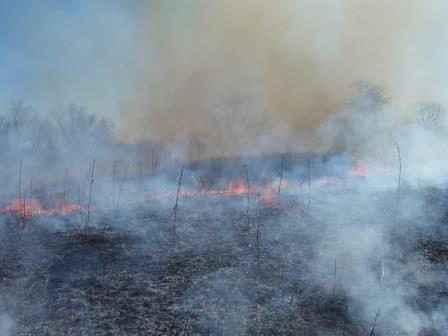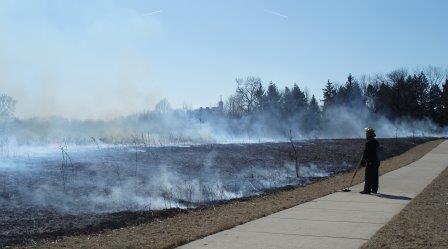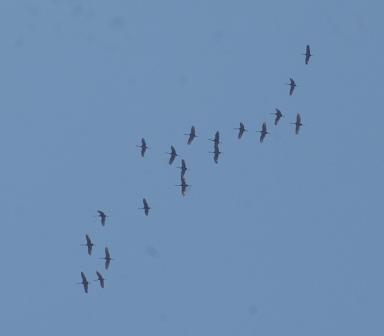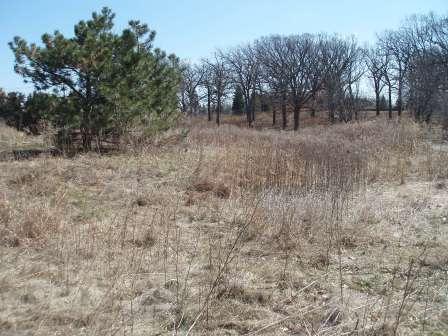by Carl Strang
The Forest Preserve District of DuPage County has invested a welcome amount of effort in restoring the forest at St. James Farm, where I am volunteer steward. Early this spring a large group of trained staff came in and conducted a successful burn of accumulated leaf litter in the main part of the forest. The point of the burn is to kill or at least weaken invasive plants such as garlic mustard and barberry.
No burn is complete, however. Some forest floor invertebrate species will need a few years to recover, but there will be plenty surviving in small spots missed by the fire, as well as surrounding areas not included in the burn.

A smaller burn on an earlier date in the area we are clearing of buckthorn was not as complete, because the leaf litter accumulation was relatively shallow and spotty.
I didn’t take any photos of the main burn as it was taking place because I was busy. Our forests historically burned very infrequently, and some of the plants cannot be assumed to be as fire-adapted as the ones characteristic of savannas and woodlands. In particular I was concerned that blackhaws (Viburnum prunifolium), the dominant shrub layer species, might be harmed. So, I worked ahead of the flames, frantically raking dead leaves away from the bases of as many blackhaws as I could reach in the two hours that I had. I did not have time to cover the entire forest, so there were some areas where the flames reached the bases of blackhaw shrubs.
In subsequent weeks the forest leafed out, and the blackhaws bloomed.
I spent part of an afternoon assessing scorched vs. unscorched blackhaws. The scorched ones nearly all had plenty of leaves, though a few were killed. Most scorched plants had some flowers, though almost all were limited to 1-5 clusters.
A little less than two-thirds of the scorched shrubs flowered at all, and again, those that did had few. Nine-tenths of the raked blackhaws bloomed, for the most part with many more flower clusters. Sample sizes were large enough to support a strong statistically significant difference. I will continue to watch this, as I am concerned that the scorched plants may have been partly girdled by the flames. I will be recommending that other forest stewards take measures to work with the fire crews and protect the native shrub layer of our woodlands by raking away fuel from shrub bases.
In the meantime, the part of the forest that we have been clearing of buckthorn and other invasive shrubs is showing first fruits of our efforts.

Even in this first year, our treatment area showed an encouraging growth of spring ephemeral herbaceous plants.
One long-term goal will be to promote blackhaw and other native species, so as to restore the shrub layer in the area we have cleared.







































